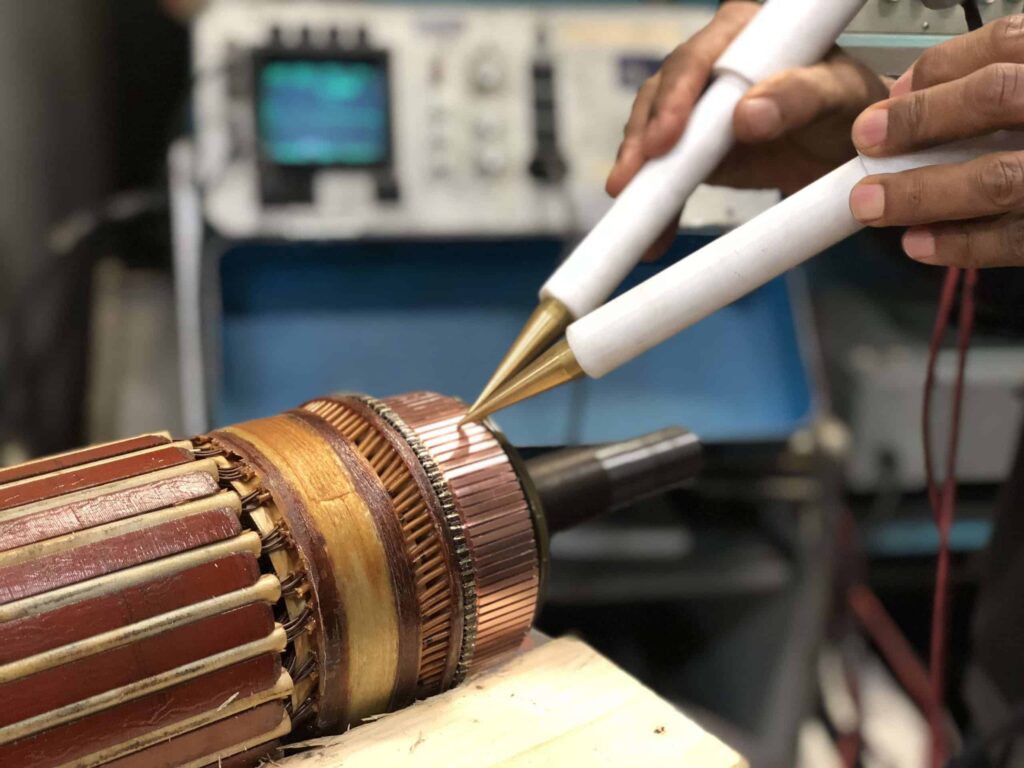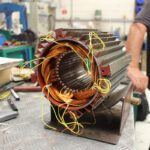8 Factors to Evaluate Before Motor Replacement
Motor replacements are critical decisions that can significantly impact the performance, efficiency, and costs associated with industrial and commercial operations. Whether you are upgrading an aging motor or replacing a malfunctioning one, making an informed decision is essential to ensuring long-term value. Below are eight important factors to evaluate before deciding to replace a motor.
1. Motor Condition and Performance
The first and most obvious factor is the current condition of the motor. If the motor is experiencing frequent breakdowns, unusual vibrations, excessive heat, or noise, these may be signs that replacement is necessary. However, you should also consider the motor’s performance relative to its designed specifications. Motors that are no longer operating at peak efficiency or have undergone significant wear might be candidates for replacement.
- Signs of wear: Poor performance, overheating, frequent maintenance, and high energy consumption are all indicators that the motor could be on its way out.
- Maintenance history: A history of constant repairs may suggest it’s more cost-effective to replace rather than continue repairing.
2. Energy Efficiency
Energy efficiency is a key factor in modern motor replacement decisions. Older motors tend to be less energy-efficient compared to newer models, and replacing them with energy-efficient alternatives can provide significant long-term savings. Consider replacing motors that operate inefficiently or consume more power than necessary.
- Energy consumption: Older motors often use more energy to deliver the same output, contributing to higher operational costs.
- Energy efficiency standards: Newer motors are often designed to meet higher energy efficiency standards, helping businesses reduce energy consumption and lower their carbon footprint.
3. Operating Costs and Maintenance
Before replacing a motor, evaluate the ongoing operating and maintenance costs of the existing one. Older motors tend to require more frequent repairs and maintenance, leading to higher operational costs. A new motor may have higher upfront costs but can offer lower maintenance needs and improved reliability over its lifespan.
- Maintenance costs: Assess the current motor’s repair and maintenance expenses. If the repair costs are nearing or exceeding the cost of a replacement, it may be time for an upgrade.
- Operational efficiency: A more energy-efficient motor will not only save on energy but also reduce the wear and tear associated with overworked equipment, lowering overall operating costs.
4. Technology Advancements
Motor technology has advanced significantly in recent years, offering improvements in energy efficiency, performance, and lifespan. Consider replacing older motors with newer models that incorporate advanced technologies such as variable frequency drives (VFDs), smart sensors, and integrated IoT (Internet of Things) capabilities.
- Smart motors: Newer motors may feature IoT connectivity that allows for predictive maintenance and real-time performance monitoring, reducing downtime and extending the life of the motor.
- Variable frequency drives: VFDs optimize motor operation by adjusting the motor’s speed to match load demands, improving both efficiency and performance.
5. Cost of Replacement vs. Repair
One of the most important considerations when replacing a motor is comparing the cost of replacement versus repair. If the motor is relatively new or has a longer expected useful life, repairs might be a more cost-effective option. However, for older motors with diminishing efficiency or frequent breakdowns, replacement may be the better financial choice.
- Repair cost: Assess the cost of major repairs such as rewinding or replacing parts.
- Replacement cost: Consider the cost of purchasing and installing a new motor, along with potential energy savings and reduced maintenance.
6. Application and Load Requirements
Different motors are designed for different applications. Before replacing a motor, it’s important to evaluate whether the current motor is adequate for the operational requirements or if the demands have changed. For example, if your load requirements have increased due to scaling operations, a more powerful or specialized motor might be needed.
- Changing load requirements: Evaluate whether the current motor can handle increased demands or if it is undersized for the job.
- Specialized applications: Consider motors designed specifically for the application (e.g., explosion-proof motors for hazardous environments or high-torque motors for heavy-duty machinery).
7. Reliability and Downtime
Reliability is crucial in industrial operations, where unexpected downtime can be costly. If the existing motor is prone to failure, downtime can disrupt production, lead to lost revenue, and decrease overall operational efficiency. A replacement motor, particularly one with modern features like remote monitoring, can improve reliability and minimize unplanned outages.
- Downtime impact: Consider how much downtime affects your operations. A new motor may reduce the risk of unexpected failures and improve overall system uptime.
- Reliability: Newer motors, especially from reputable brands, often offer greater reliability, reducing the likelihood of unscheduled shutdowns.
8. Environmental and Regulatory Considerations
Increasingly stringent environmental regulations and sustainability goals require industries to adopt more energy-efficient and environmentally friendly technologies. When considering motor replacement, check for motors that comply with environmental standards such as the International Efficiency (IE) standards. Replacing outdated motors with energy-efficient models can help reduce your environmental impact and comply with regulations.
- Energy efficiency standards: Ensure that the new motor meets the latest energy efficiency guidelines, such as IE3 or IE4 ratings, which are becoming mandatory in many regions.
- Environmental impact: Consider the environmental footprint of the motor, including its energy consumption and recyclability.
Conclusion
Replacing a motor is not a decision to be made lightly. Several factors, such as the motor’s condition, energy efficiency, maintenance costs, technological advancements, and application requirements, should be carefully evaluated before moving forward. Additionally, considerations like cost, reliability, and environmental impact are crucial for making a well-informed decision. By thoroughly assessing these factors, businesses can ensure that they choose the most cost-effective, efficient, and sustainable motor replacement solution for their needs, ultimately enhancing operational performance and profitability.



